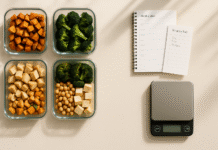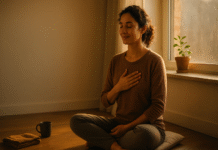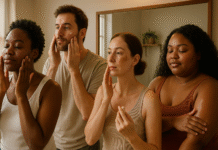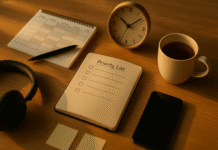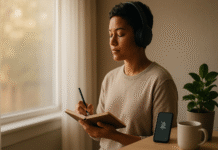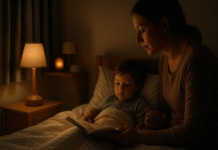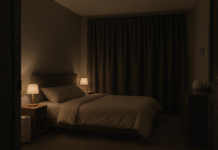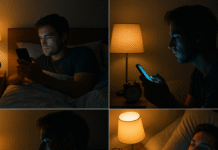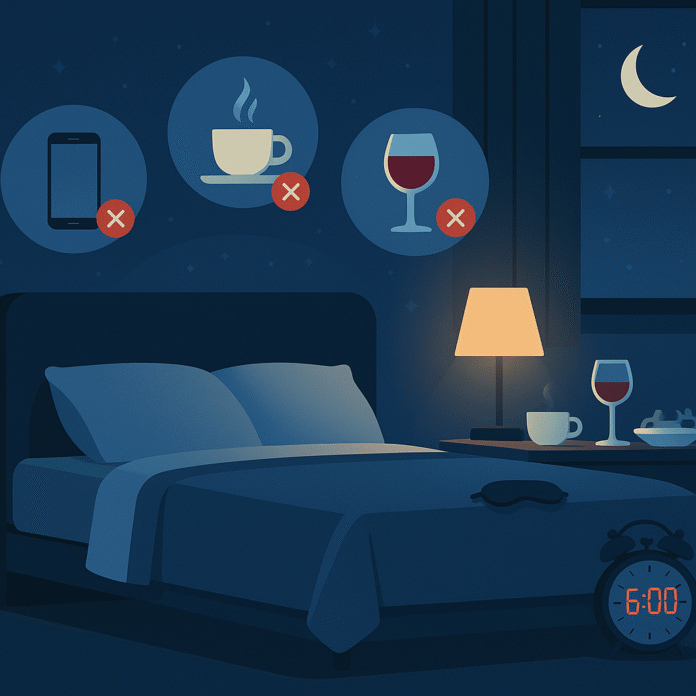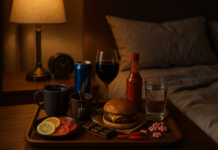If you’ve been “doing everything right” and still waking up groggy, there’s a good chance some stealthy habits are sabotaging your sleep hygiene. Sleep hygiene is the set of behaviors and environmental cues that teach your brain when it’s time to sleep and when it’s time to be alert. Get them wrong, and you can struggle with falling asleep, staying asleep, or waking refreshed—even if you’re technically in bed for enough hours. This guide breaks down the 10 most common mistakes that derail sleep hygiene, how to fix them step by step, and how to measure whether your efforts are working.
Medical disclaimer: The guidance below is educational and general. If you have ongoing insomnia (≥3 nights/week for ≥3 months), loud snoring with pauses in breathing, restless legs, parasomnias, or any health condition, consult a qualified healthcare professional for diagnosis and personalized care.
Key takeaways
- Consistency beats perfection. A steady sleep–wake schedule—yes, even on weekends—is the foundation for quality sleep.
- Your evening inputs matter. Light, caffeine, alcohol, heavy meals, and late fluids can all delay, fragment, or shorten sleep.
- The bedroom is a cue. Cool, dark, quiet rooms plus “bed for sleep/sex only” strengthens your brain’s sleep association.
- Rituals reduce friction. A simple 20–30 minute wind-down routine calms the nervous system and speeds sleep onset.
- Track the right metrics. Watch sleep efficiency (≥85%), time-to-sleep, night awakenings, and daytime energy to see progress.
1) Keeping an Irregular Sleep Schedule (“Social Jet Lag”)
What it is & why it ruins sleep
Going to bed and waking up at wildly different times across the week confuses your internal clock. Even one or two late sleep-ins can shift your circadian rhythm enough to make Sunday night a slog and Monday a misery. The payoff for fixing it is faster sleep onset, fewer nighttime awakenings, and higher morning alertness.
Requirements & low-cost alternatives
- Helpful tools: A reliable alarm, sunrise/sunset alarms (optional), a calendar reminder.
- No-cost swaps: Phone alarms with labeled reminders (“Lights out by 11:00”; “Wake at 7:00”).
Step-by-step fix
- Pick a wake time you can keep 7 days a week. Anchor the morning first; bedtime will follow naturally when you’re sleepy.
- Keep bedtime within a 30–60 minute window. If you’re not sleepy, delay by 15 minutes and keep lights dim.
- Guard weekends. Sleeping in >60 minutes resets your clock; if you must, cap it at 1 hour.
Beginner modifications & progressions
- Beginner: Align wake times within ±60 minutes.
- Progression: Tighten to ±30 minutes, then add a consistent pre-sleep routine and morning light exposure.
Frequency, duration, metrics
- Daily. Aim for sleep efficiency ≥85% (time asleep ÷ time in bed × 100). Track sleep onset latency (<20–30 minutes) and night awakenings.
Safety, caveats, common mistakes
- Don’t force an early bedtime before you’re sleepy; that backfires into tossing and turning.
- For shift workers, consistency across shifts matters more than strict clock times.
Mini-plan
- Fri–Sun: Set awake alarms for your weekday time + 30 minutes.
- All week: Dim household lights 60–90 minutes before bed.
- Every morning: Get light exposure within 30 minutes of waking.
2) Flooding Your Eyes With Bright Screens Before Bed
What it is & why it ruins sleep
Evening exposure to bright light—especially blue-enriched light from phones, tablets, and TVs—suppresses melatonin and delays your circadian phase. The result: later sleep onset and lighter sleep.
Requirements & low-cost alternatives
- Helpful tools: Blue-light filters (Night Shift, Night Light), warm-temperature bulbs, an old-school alarm clock so you can park the phone out of reach.
- Low-cost: Paper book, audiobook, low-lux lamp, eye mask.
Step-by-step fix
- Declare a screen curfew 60–90 minutes before lights out.
- If you must use a device: Turn on night mode at max warmth, dim brightness to the lowest comfortable level, and hold devices below eye level.
- Swap in wind-down activities: Stretching, breathing, light reading, journaling, or a warm shower.
Beginner modifications & progressions
- Beginner: Start with a 30-minute screen-free buffer.
- Progression: Extend to 60–90 minutes, replace overhead lighting with lamps, and add an eye mask.
Frequency, duration, metrics
- Nightly. Track sleep onset latency, time-in-bed awake, and grogginess on waking (0–10 scale).
Safety, caveats, common mistakes
- Don’t compensate by cranking screens to maximum red but doomscrolling stressful content; mental stimulation also delays sleep.
- If anxiety spikes without screens, fill the time with structured but calming tasks (puzzles, gentle tidying).
Mini-plan
- T-90 min: Dim lights, enable Night Shift.
- T-60 min: Devices off; start wind-down.
- T-15 min: Brush, breathe, bed.
3) Caffeine Too Late (or Too Much)
What it is & why it ruins sleep
Caffeine blocks adenosine receptors, masking sleep pressure. Its half-life can range from ~2 to 12 hours, so a 4 p.m. latte can still be in circulation at bedtime. Overdoing it shortens total sleep, fragments the second half of the night, and worsens next-day anxiety.
Requirements & low-cost alternatives
- Helpful tools: A cutoff time alarm (“No caffeine after 1 p.m.”), decaf and herbal teas, a water bottle.
- Low-cost swaps: Half-caf blends; energize with a brisk 5-minute walk instead of another espresso.
Step-by-step fix
- Pick a firm cutoff time 8–10 hours before bed. Earlier if you’re sensitive or have insomnia.
- Audit hidden sources: Tea, chocolate, sodas, pre-workouts, and some pain meds.
- Taper, don’t crash: Reduce by 50–100 mg every 3–4 days until your intake fits your cutoff.
Beginner modifications & progressions
- Beginner: Slide your last caffeine 1–2 hours earlier each week.
- Progression: Cap daily intake around the typical upper limit for most adults and stop 8+ hours pre-bed; use “strategic first-cup timing” (after natural morning wake-up rather than immediately on rising).
Frequency, duration, metrics
- Daily. Track total mg/day, last-dose time, sleep onset latency, and mid-sleep awakenings.
Safety, caveats, common mistakes
- Individuals vary widely; pregnancy, medications, liver function, and smoking status change caffeine metabolism.
- Don’t swap caffeine for alcohol at night; you’ll trade one sleep disruptor for another.
Mini-plan
- Week 1: Last caffeine by 3 p.m.
- Week 2: Last caffeine by 1 p.m. + replace late cup with herbal tea.
- Week 3: Hold the line and reassess sleep efficiency.
4) Using Alcohol as a “Sleep Aid”
What it is & why it ruins sleep
Alcohol can make you drowsy and shorten the time it takes to fall asleep—but it disrupts sleep architecture later in the night, reducing REM sleep and causing frequent awakenings. You’ll wake less refreshed and more dehydrated.
Requirements & low-cost alternatives
- Helpful tools: A drink-tracking app or calendar, alcohol-free alternatives (seltzer with lime, NA beer).
- Low-cost swaps: If you drink, have it with dinner instead of as a nightcap.
Step-by-step fix
- Move your last drink earlier. Aim to stop at least ~3 hours before bed.
- Alternate with water and avoid sugary mixers.
- Limit to modest amounts on nights before early commitments.
Beginner modifications & progressions
- Beginner: Start with two alcohol-free nights per week.
- Progression: Make weeknights alcohol-free and keep any drinks to the early evening on weekends.
Frequency, duration, metrics
- Weekly. Track drinks per week, time of last drink, night awakenings, snoring reports, and morning grogginess.
Safety, caveats, common mistakes
- Alcohol can worsen snoring and sleep apnea. If you snore loudly or wake choking, seek evaluation.
- Don’t combine alcohol with sleep medications unless prescribed; it can be dangerous.
Mini-plan
- Plan social nights to finish drinks by dinner.
- Switch to NA beverage for the final hour.
- Hydrate, then dim lights for wind-down.
5) Treating the Bed Like a Couch (Stimulus Control Violations)
What it is & why it ruins sleep
The brain learns by association. If you answer emails, scroll, or lie awake frustrated in bed, your brain starts to link your mattress with wakefulness. Stimulus control retrains that link so the bed cues sleep again.
Requirements & low-cost alternatives
- Helpful tools: A small chair or floor cushion for out-of-bed wakeful time, a dim lamp in another room, a paper book.
- Low-cost swaps: Turn the clock face away to avoid time-checking.
Step-by-step fix
- Go to bed only when sleepy.
- Use the bed for sleep and sex only. No work, no TV.
- Can’t sleep after ~15–20 minutes? Get up, keep lights low, do something calm. Return when sleepy. Repeat as needed.
- Wake at the same time every day.
Beginner modifications & progressions
- Beginner: Start by turning the clock away and parking your phone outside the bedroom.
- Progression: Practice the “get out of bed when not sleepy” rule consistently for two weeks.
Frequency, duration, metrics
- Nightly. Track time awake in bed, sleep onset latency, and sleep efficiency.
Safety, caveats, common mistakes
- The first few nights can feel worse before it gets better. Stick with it for 10–14 days to see the reset take hold.
- Keep the alternative activity boring (light reading), not stimulating (deep cleaning, gaming).
Mini-plan
- Create a “wake nook” (chair + dim lamp + book).
- Turn clock away and set a gentle overnight alarm.
- If you’re awake and frustrated, leave the bed until sleepy returns.
6) Napping Too Long or Too Late
What it is & why it ruins sleep
Naps can be powerful—but long or late naps drain the sleep pressure you need at bedtime, leading to delayed sleep and fragmented nights.
Requirements & low-cost alternatives
- Helpful tools: A 20-minute timer, eye mask, and earplugs.
- Low-cost swaps: A 10-minute brisk walk or a “coffee-nap” (small coffee then a 15–20 minute nap, not after your caffeine cutoff).
Step-by-step fix
- Cap naps at 10–20 minutes.
- Nap early afternoon (roughly 1–3 p.m.).
- Avoid napping after 4–5 p.m. if you struggle at night.
Beginner modifications & progressions
- Beginner: If you typically nap an hour, cut to 30 minutes this week, then 20 next week.
- Progression: Replace naps with light activity on days you slept poorly to rebuild nighttime sleep pressure.
Frequency, duration, metrics
- As needed. Track nap start time, duration, and bedtime sleep onset that night.
Safety, caveats, common mistakes
- Shift workers, new parents, and people with certain medical conditions may need longer naps—coordinate with a clinician.
- If you wake groggy from naps, you’re likely entering deeper sleep; shorten the window.
Mini-plan
- Set a 20-minute timer before closing your eyes.
- Mask + earplugs, recline but don’t fully get into bed.
- Walk 5 minutes after waking to shake off grogginess.
7) Ignoring the Bedroom Environment (Light, Temperature, and Noise)
What it is & why it ruins sleep
Your brain treats light as daytime, heat as a stressor, and noise as a threat. A sub-par bedroom—too bright, too warm, too noisy—keeps you in shallow sleep and stokes awakenings.
Requirements & low-cost alternatives
- Helpful tools: Blackout curtains or an eye mask, a white-noise machine or fan, and a thermometer.
- Low-cost swaps: Tape over LED status lights, roll a towel to block door light, use a box fan or a simple white-noise app.
Step-by-step fix
- Cool it down. Aim around 65°F / 18–19°C, adjusting a few degrees for comfort.
- Darken the room. Block outside light and cover LEDs; try an eye mask if curtains aren’t an option.
- Mask noise. Run steady white noise or a fan to cover intermittent sounds.
Beginner modifications & progressions
- Beginner: Start with an eye mask and fan.
- Progression: Add blackout curtains and experiment with temperature to find your personal “sweet spot.”
Frequency, duration, metrics
- Nightly. Track night awakenings, subjective room darkness/quiet (0–10), and morning refreshment.
Safety, caveats, common mistakes
- White noise helps many but not all; if it’s irritating, try softer “pink” or “brown” noise, or earplugs.
- Keep safety lighting minimal and warm if you need night visibility.
Mini-plan
- Tonight: Cover LEDs and set thermostat 1–2°C cooler.
- This week: Install blackout curtains or adopt an eye mask.
- Noise plan: Fan on low or white-noise app at a fixed volume.
8) Skipping Morning Light and Daytime Movement
What it is & why it ruins sleep
Your clock needs bright morning light to anchor your circadian rhythm—and daytime activity to build healthy sleep pressure. Without these, you’ll feel wired at night and sluggish in the morning.
Requirements & low-cost alternatives
- Helpful tools: A morning walk, balcony or window sun, a wearable to remind you to move.
- Low-cost swaps: Stretching and opening curtains immediately after waking.
Step-by-step fix
- Get outside within 30–60 minutes of waking for 10–30 minutes of daylight (more time if it’s overcast).
- Move most days. Aim for at least 150 minutes/week of moderate activity.
- Time intense workouts wisely. Many can handle evening exercise, but if high-intensity sessions less than an hour before bed keep you wired, move them earlier.
Beginner modifications & progressions
- Beginner: 10-minute morning walk + 5-minute stretch breaks every 90 minutes of sitting.
- Progression: Add 2–3 moderate-intensity sessions weekly and a longer weekend walk.
Frequency, duration, metrics
- Daily. Track morning light minutes, total steps, exercise timing vs. bedtime, and sleep onset.
Safety, caveats, common mistakes
- Sunscreen and shade as needed; you don’t need direct sun on skin to get bright light to the eyes.
- If late workouts delay your sleep, shift intensity or timing rather than quitting exercise entirely.
Mini-plan
- Morning: Open curtains and step outside for 15 minutes.
- Midday: 10-minute brisk walk.
- Evening: Gentle mobility or yoga instead of intense intervals if bedtime is near.
9) Heavy Dinners or Big Drinks Too Close to Bed
What it is & why it ruins sleep
Large or spicy meals before bed can trigger reflux and restless sleep. Excess evening fluids can wake you for bathroom trips (nocturia), fragmenting sleep in the second half of the night.
Requirements & low-cost alternatives
- Helpful tools: A simple meal schedule, a water bottle you finish earlier in the day, light snacks (e.g., yogurt, banana + nut butter).
- Low-cost swaps: Shift dinner earlier; make late-evening snacks small and balanced if truly hungry.
Step-by-step fix
- Finish dinner 2–3 hours before bedtime (earlier if reflux is an issue).
- Limit fluids 2–3 hours before bed; do a final bathroom visit before lights out.
- If hungry before bed: Choose a small, protein-rich snack rather than a heavy meal.
Beginner modifications & progressions
- Beginner: Move dinner 30 minutes earlier this week; set a “last sip” reminder 2 hours pre-bed.
- Progression: Stabilize your meal pattern and track which foods disturb your sleep.
Frequency, duration, metrics
- Nightly. Track meal timing, fluid cutoff, nighttime awakenings, and reflux symptoms.
Safety, caveats, common mistakes
- Persistent reflux warrants medical evaluation.
- Don’t drastically dehydrate; front-load your fluids earlier in the day.
Mini-plan
- Tonight: Set a “kitchen closed” alarm 3 hours before bed.
- After dinner: Sip sparingly; empty bladder before lights out.
- If peckish: Opt for a small, simple snack.
10) Clock-Watching, Worry Spirals, and No Wind-Down Routine
What it is & why it ruins sleep
Staring at the clock increases performance anxiety (“If I fall asleep now I’ll get only 4 hours!”), spiking arousal and delaying sleep further. Without a wind-down, your brain slams from 5th gear to parked—poorly.
Requirements & low-cost alternatives
- Helpful tools: A bedside lamp with warm light, a notebook, a simple breathing or body-scan script, a timer.
- Low-cost swaps: Turn the clock face away or cover it; keep a “worry pad” for a five-minute brain dump.
Step-by-step fix
- Create a 20–30 minute wind-down. Keep it consistent and boring (stretch, shower, breathe, read).
- Hide the clock. If you wake overnight, resist checking the time.
- Schedule a daily “worry time.” Jot down tasks earlier in the evening so bed isn’t for problem-solving.
Beginner modifications & progressions
- Beginner: Start with a 10-minute wind-down (2 minutes breathing, 5 minutes stretching, 3 minutes reading).
- Progression: Build to 30 minutes, add a guided relaxation, and keep the same sequence every night.
Frequency, duration, metrics
- Nightly. Track wind-down minutes, time-to-sleep, and overnight clock-checks (aim for zero).
Safety, caveats, common mistakes
- If your mind races, accept thoughts rather than fight them; let them pass and return to the breath or body.
- Persistent early-morning awakening may signal circadian or mood issues—bring it up with a clinician.
Mini-plan
- Two hours pre-bed: Tidy your to-do list; set out clothes.
- T-30: Lights warm and low; phone docked outside the room.
- T-0: Lights out, clock turned away.
Quick-Start Sleep Hygiene Checklist
- Fixed wake time (±30 minutes) seven days a week
- Screen-free last 60 minutes; dim, warm lighting
- Caffeine cutoff 8–10 hours before bed
- No nightcap; stop alcohol ≥3 hours pre-bed
- Dinner 2–3 hours pre-bed; fluids limited 2–3 hours pre-bed
- Bedroom: cool (~18–19°C), dark (mask/curtains), quiet (white noise)
- Morning light 10–30 minutes; daily movement
- Bed = sleep & sex only; out of bed if not sleepy
- Wind-down 20–30 minutes; clock face turned away
Troubleshooting & Common Pitfalls
- “I did everything right and still slept badly last night.” Normal sleep fluctuates. Look at your weekly averages rather than one night.
- “I can’t fall asleep without TV.” Keep audio only (podcast/audiobook) on a sleep timer with the screen off and volume low.
- “Evening workouts keep me buzzing.” Shift intense sessions earlier; try lower-intensity movement after dinner and use breathwork to down-shift.
- “I wake to pee.” Front-load daytime fluids; set a last-sip time; talk to a clinician if nocturia persists.
- “I nap because I’m exhausted.” Shorten naps to 10–20 minutes and move them earlier. Use light exercise if you’re drowsy late afternoon.
How to Measure Results (Simple Metrics That Matter)
- Sleep Efficiency (SE): Time asleep ÷ time in bed × 100. Target ≥85%.
- Sleep Onset Latency (SOL): Minutes from lights out to sleep. Target ≤20–30 minutes most nights.
- Wake After Sleep Onset (WASO): Total minutes awake after initially falling asleep. Trend down over weeks.
- Nighttime Awakenings: Count and duration. Aim for fewer/shorter.
- Daytime Energy/Mood: 0–10 scale on waking and mid-day. Trend up.
- Consistency Score: Days you hit your wake time within ±30 minutes (goal: 6–7/7).
Track these in a paper diary or notes app. Review weekly, not nightly.
A Simple 4-Week Sleep-Hygiene Reset
Week 1 – Anchor & Audit
- Pick a fixed wake time for all 7 days; set two alarms (primary + backup).
- Keep a sleep diary (bedtime, wake time, SOL, awakenings, SE).
- Establish a caffeine cutoff and shift dinner earlier by 30–60 minutes.
Week 2 – Light & Environment
- Morning light: 10–20 minutes outside within an hour of waking.
- Bedroom: Cool to ~18–19°C, cover LEDs, add eye mask or blackout curtains, start white noise if needed.
- Evening: Screen-free 45–60 minutes; dim lights.
Week 3 – Rituals & Replacements
- Add a 20–30 minute wind-down routine (stretching, shower, breathing, reading).
- Make alcohol-free weeknights; move any drinks to ≥3 hours pre-bed on weekends.
- Trim naps to 10–20 minutes before 3 p.m., or replace with a 10-minute walk.
Week 4 – Fine-Tune & Lock In
- Tighten bedtime window to ±30 minutes.
- Troubleshoot remaining triggers (late fluids, spicy dinners, late HIIT).
- Review your diary: celebrate improvements in SE, SOL, awakenings, and daytime energy. Keep what works.
FAQs
1) How many hours should most adults sleep?
Most healthy adults do best with at least 7 hours per night. Individual needs vary, but consistently less than that is linked to daytime impairment and long-term health risks.
2) Is it okay to exercise at night?
Often yes. Many people sleep fine—or better—after evening exercise. If high-intensity workouts within an hour of bedtime delay your sleep, move them earlier or lower the intensity at night.
3) What’s the ideal bedroom temperature?
Many sleepers do best around 65°F (18–19°C), but a few degrees warmer or cooler may suit you. Focus on feeling slightly cool when you tuck in (you’ll warm the bed).
4) Do blue-light glasses fix the screen problem?
They can help reduce melatonin suppression, but brightness and content also matter. The safest play is a screen-free hour, dim warm lighting, and relaxing activities.
5) Are naps bad for sleep?
Short, early-afternoon naps (10–20 minutes) can boost alertness without harming nighttime sleep. Long or late naps often make it harder to fall asleep at night.
6) Is alcohol before bed really that harmful?
Even modest doses fragment sleep later in the night and reduce REM. If you drink, finish ≥3 hours before bedtime and hydrate.
7) What’s the best way to stop 3 a.m. clock-watching?
Turn the clock face away, keep the room dark, and use stimulus control: if you’re wide awake and frustrated, get out of bed and do something calm in dim light until sleepy.
8) I wake to pee—what helps?
Limit evening fluids (2–3 hours pre-bed), avoid late alcohol/caffeine, and empty your bladder before lights out. Persistent nocturia warrants medical evaluation.
9) Do white-noise machines work?
They help many people by masking intermittent noises, though research is mixed. If white noise irritates you, try pink/brown noise or foam earplugs.
10) How long until sleep hygiene changes “work”?
Some relief happens within days, but 2–4 weeks of consistent habits is a fair trial. If insomnia persists, ask your clinician about CBT-I, the gold-standard behavioral treatment.
Conclusion
Better sleep isn’t about willpower—it’s about teaching your brain the right cues and removing the saboteurs. Anchor your wake time, dim the evening world, respect your cutoffs (caffeine, alcohol, heavy meals, fluids), and protect your bedroom environment. Give the plan four weeks and watch your sleep efficiency, energy, and mood climb.
CTA: Start tonight—set your wake time, dim the lights an hour early, and turn your clock face away.
References
- FastStats: Sleep in Adults, Centers for Disease Control and Prevention, May 15, 2024. https://www.cdc.gov/sleep/data-research/facts-stats/adults-sleep-facts-and-stats.html
- About Sleep, Centers for Disease Control and Prevention, May 15, 2024. https://www.cdc.gov/sleep/about/index.html
- Caffeine and Sleep, Sleep Foundation, July 16, 2025. https://www.sleepfoundation.org/nutrition/caffeine-and-sleep
- How Long Does Caffeine Last & Keep You Awake?, Houston Methodist, July 7, 2023. https://www.houstonmethodist.org/blog/articles/2021/oct/caffeine-sleep-how-long-does-caffeine-keep-you-awake/
- Blue light has a dark side, Harvard Health Publishing, July 24, 2024. https://www.health.harvard.edu/staying-healthy/blue-light-has-a-dark-side
- The influence of blue light on sleep, performance and wellbeing: A systematic review, National Library of Medicine (PMC), 2022. https://pmc.ncbi.nlm.nih.gov/articles/PMC9424753/
- Alcohol and Sleep, Sleep Foundation, 2024–2025. https://www.sleepfoundation.org/nutrition/alcohol-and-sleep
- How Does Alcohol Affect Sleep?, Cleveland Clinic Health Essentials, 2025. https://health.clevelandclinic.org/why-you-should-limit-alcohol-before-bed-for-better-sleep
- Alcohol and the Sleeping Brain, National Library of Medicine (PMC), 2018. https://pmc.ncbi.nlm.nih.gov/articles/PMC5821259/
- Disturbed Sleep and Its Relationship to Alcohol Use, National Library of Medicine (PMC), 2009. https://pmc.ncbi.nlm.nih.gov/articles/PMC2775419/
- Cognitive Behavioral Therapy for Insomnia (CBT-I): Stimulus Control, Stanford Health Care, accessed 2025. https://stanfordhealthcare.org/medical-treatments/c/cognitive-behavioral-therapy-insomnia/procedures/stimulus-control.html
- Sleep Scheduling and Stimulus Control Techniques (PDF), University of Massachusetts Medical School, accessed 2025. https://www.umassmed.edu/globalassets/psychiatry/cbti/overcoming_insomnia_session_2.pdf
- Napping: Benefits and Tips, Sleep Foundation, March 11, 2024. https://www.sleepfoundation.org/napping
- The Best Temperature for Sleep, Sleep Foundation, July 11, 2025. https://www.sleepfoundation.org/bedroom-environment/best-temperature-for-sleep





